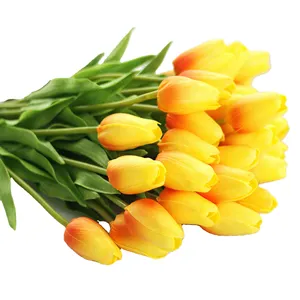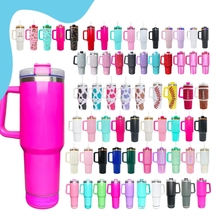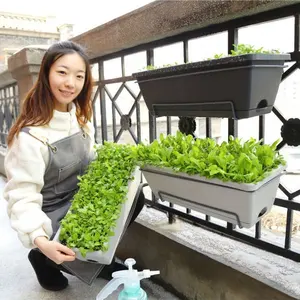Introduction
Welcome to the future of eco-friendly landscaping, where the traditional meets the innovative in the form of flower plastic. This revolutionary material is transforming the way we approach garden design, offering a blend of aesthetic appeal, functionality, and environmental consciousness. From creating striking flower bed edging to manufacturing stunning artificial flowers, flower plastic is redefining the boundaries of landscaping. This article delves into the world of flower plastic, exploring its manufacturing process, environmental impact, and how it can be incorporated into your garden for a low-maintenance, vibrant display. We'll also look at the future of eco-friendly landscaping, where products like flower plastic are leading the charge towards a more sustainable horticultural industry.
Understanding Flower Plastic: A New Era of Landscaping
Flower plastic, particularly plastic landscape edging, is revolutionizing the landscaping industry. It's an easy and effective way to create neat, clean, and outstanding flower bed edging. Plastic lawn edging distinguishes a garden bed from the rest of a lawn, enhancing the overall aesthetic appeal. Moreover, it's easy to install, requiring no digging, and is suitable for all soil types. Products made of flexible and durable recycled plastic are leading the way in this new era of landscaping.
The Eco-Friendly Aspects of Flower Plastic
Flower plastic, similar to biodegradable plastics, offers significant eco-friendly benefits. It reduces greenhouse gas emissions, as it's not made through the harmful extraction and refinement of petroleum. For every ton of petroleum-based plastics produced, there's up to three tons of CO2 that follows suit. With flower plastic, this figure is significantly reduced. Additionally, less energy is used in its production, and it results in less waste. Traditional plastic can take up to 1,000 years to fully biodegrade, whereas flower plastic can biodegrade or be reduced significantly in size in a much shorter time frame.
How Flower Plastic is Made
Flower plastic, primarily used in the creation of artificial flowers, is manufactured through a process known as injection moulding. In this process, plastic is injected into a preformed metal die, resulting in mass-produced artificial flowers. This technique has been widely adopted due to its efficiency and the high-quality results it produces. The artificial flowers made from this process are not only visually appealing but also durable, making them a popular choice for both indoor and outdoor decoration.
The Environmental Impact of Flower Plastic
The environmental impact of the flower industry, particularly the use of plastic, is significant. Single-use plastic waste from flower packaging is staggering, contributing to the world's microplastic pollution. Traditional floristry reportedly produces up to 100,000 tonnes of plastic waste annually. Most of this plastic waste ends up in landfills, with a significant portion finding its way into rivers, lakes, or oceans. The flower industry's carbon footprint is also substantial, with flowers often transported worldwide in refrigerated cargo jets and trucks, wrapped in plastic.
Revolutionizing Your Garden with Flower Plastic
Artificial flowers, or 'flower plastic', can revolutionize your garden, offering a low-maintenance, stunning display. UV-protected artificial flowers and plants are designed to withstand outdoor elements, resisting fading and damage from ultraviolet light. They can fill gaps in your landscaping, providing a vibrant pop of color. While they may not last as long as perennial plants, their longevity can be extended with proper care and additional UV protection. Incorporating these faux plants into your garden can create a lush, full look, giving the impression of a well-established garden.
Choosing the Right Flower Plastic for Your Garden
Choosing the right artificial flower arrangement for your garden involves considering size, color, and function. Consider the scale of the arrangement in relation to your garden space. Color choice should complement your existing landscape, and you can choose contrasting colors for a striking effect. The function of your flower plastic arrangement could range from a permanent fixture to occasional use for events. Also, consider the shape of the vase or planter to match your garden's aesthetic. Remember, with artificial flowers, seasonality isn't an issue, so you can choose any flower type regardless of the time of year.
Incorporating Flower Plastic into Your Existing Landscape
Incorporating flower plastic, or acrylic, into your existing landscape can revolutionize your garden design. Acrylic panels are weatherproof, strong, and versatile, offering a range of appearances from transparent to colored. They can create illusions, such as making a small garden appear larger. Acrylic can also be formed into various shapes, allowing for unique designs and sculptures. This versatility makes flower plastic an excellent choice for enhancing your garden's aesthetic while maintaining its functionality.
Maintaining and Caring for Your Flower Plastic
Maintaining and caring for your flower plastic is essential to keep them looking fresh and vibrant. Upon unboxing, fluff the petals and leaves to create a fuller look. Check if they're safe for outdoor use, as some are only for indoor or covered outdoor use. Protect them from direct sunlight and extreme weather conditions. Regular cleaning is also crucial. Dust them weekly or biweekly using a soft, dry cloth or fabric duster. Avoid using water or chemicals as these may damage your flower plastic. Proper storage is also key. Store them in a cool, dry place away from direct heat and light.
The Future of Eco-Friendly Landscaping with Flower Plastic
The future of eco-friendly landscaping is being revolutionized by products like plastic-free floral blocks. This innovative product, made from natural materials, is fully biodegradable and compostable, leaving no lasting environmental footprint. It offers excellent water absorption, extending the vase life of flowers, and can be easily shaped to fit various container sizes. Its use supports a circular economy, as it can be composted after use, returning valuable nutrients back to the soil. As sustainability becomes a key factor in consumer choices, using such products can position designers and brands as industry leaders.
Emerging Trends in Flower Plastic
Instagram snaps of 'floral' walls are driving a boom in the plastic plants. This trend, often seen as a modern aesthetic choice, is rapidly gaining popularity across the country. However, it's not without its critics, with some expressing concerns over the aesthetic and ecological cost of these plastic flowers. Despite the controversy, the trend of using flower plastic in landscaping is undeniably on the rise.
The Role of Flower Plastic in Sustainable Landscaping
The horticultural industry is increasingly recognizing the environmental impact of traditional plastic use. One solution is the introduction of recyclable plant pots, made from lighter colored, recycled plastic. These containers can be sorted and recycled more efficiently than their black plastic counterparts. However, it's important to remember that even recyclable plastics have a limited lifespan and recycling requires energy. Therefore, sustainable practices such as reusing plastics responsibly and opting for bare root plants to reduce plastic use are also essential. This shift towards more sustainable materials like flower plastic is revolutionizing the gardening landscape.
Conclusion
Flower plastic is more than just a landscaping trend; it's a step towards a more sustainable future. Its versatility and aesthetic appeal make it a game-changer in garden design, while its eco-friendly aspects offer a viable alternative to traditional, petroleum-based plastics. The use of flower plastic, from edging to artificial flowers, can transform your garden into a vibrant, low-maintenance haven. Moreover, the emergence of innovative, biodegradable products signals a shift towards a circular economy in the horticultural industry. Despite some criticism, the trend of using flower plastic in landscaping is on the rise, driven by a growing awareness of the environmental impact of traditional plastic use. As we move forward, flower plastic will continue to play a pivotal role in the evolution of eco-friendly landscaping.









































 浙公网安备 33010002000092号
浙公网安备 33010002000092号 浙B2-20120091-4
浙B2-20120091-4